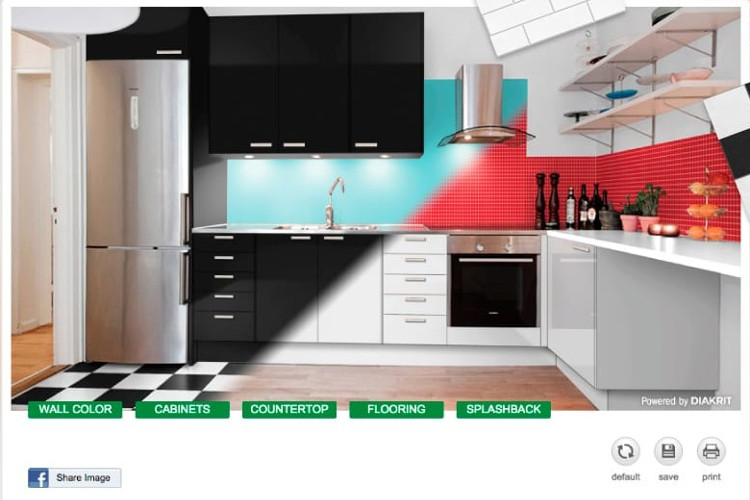Thanks to European real estate marketing behemoth Diakrit, the future of real estate marketing for Australia might be easier to predict than we think.
There has been a lot of discussion in recent years about real estate industry disruption beyond the oligopoly we see with the online real estate portals. Most people in the property industry believe that major change is on the horizon but speculation continues as to in what shape and form this might arrive.
Thanks to European real estate marketing behemoth Diakrit, the future of real estate marketing for Australia might be easier to predict than we think.
Diakrit is one of the most successful real estate marketing and technology companies in Europe. Now operating locally, across Australia and New Zealand, Diakrit is bringing interactive digital trends from Sweden, Norway and Denmark to our industry. Providing an improved customer experience and a swag of other benefits along the way.
Is the future of real estate … Scandi?
The Scandinavian region of Europe has become a testing ground for many global media tech giants when rolling out platform changes. Interestingly, this area has also seen rapid adoption of social and digital media in real estate. The integration of technology and a more interactive approach is part of the reason why Sweden and its neighbours can easily be described as being seven to eight years ahead of Australia and New Zealand when it comes to real estate marketing.
We interviewed Diakrit CEO Dick Karlsson to find out what Australian agents can learn from his 20 years of real estate marketing experience in Scandinavia.
Real estate Euro-style
It is always interesting to compare the different ways in which real estate agents work between countries. In Sweden, for example, licensed real estate agents must complete a three-year university degree (certified by the European Association of Real Estate Professionals, CEPI) before they are legally licensed to work in the industry.
“Agents are also certified valuers,” explains Dick, “the banks rely on their valuations, not just consumers.” Swedish real estate professionals face a significant amount of pressure to be accurate in their valuations and come under scrutiny if they are too far off the mark. For this reason, property valuations are closer to final sales prices, and the problems of under quoting do not exist.
Dick explains that the level of education required creates a significant barrier to entry to becoming a property professional in Sweden. However, as a result of the big commitment and upfront investment in both time and money, new agents generally maintain longer careers in the industry.
In a similar vein to the Australian Banking Royal Commission and how its flow-on effects have impacted our real estate industry, regulation was tightened significantly in Sweden post the property recession in the 90’s. Tougher rules to Scandinavian real estate standards alongside a reduction in unstable investment schemes helped Sweden avoid a colossal downturn during the global financial crisis (GFC).

Real estate marketing in Sweden is advanced
As Dick explains, the Swedes are just as property obsessed as Australians and property prices are a common topic of debate, as they are down under. However, the property sales and marketing process in Sweden is quite different.
For one thing, in Sweden, Norway and Denmark, property campaigns have been purely digital since around 2008. This is partly because there is no vendor paid advertising and agents pay for the entire property marketing campaign out of their own commission. With a tight budget, there is little to spare for print advertising.
Interestingly, the average home value in Sweden is equivalent to $450,000 Australian dollars and agents can be paid as little as one per cent in commission. Dick believes this was the main driver behind the rapid take up of digital marketing in the Scandinavian real estate industry. In addition, “Scandinavians have a love of data. We love to see and measure results to better understand what works. We want proof in the numbers before spending our marketing dollars.” Advertising in the digital realm makes it much easier to track results and measure return on investment.
Online property auctions in Sweden are a success
In talking with Dick, what was perhaps most interesting was his insights into how the interactive marketing campaigns help with the online auction process too. Dick explains that buyers can make online bids more confidently when they have the ability to visit and revisit the property through a virtual tour.
In Scandinavia, property campaigns are typically launched online alone, with open homes on Sundays and Tuesdays.
The first week of the campaign focuses on allowing buyers to research and experience the property, either virtually or physically. Thereafter, the property becomes available through an online auction, where you can place bids virtually.
In fact, there’s no need for on-site auctions in Sweden, and it’s become a well-oiled real estate system that has resulted in the country boasting a 98% clearance rate, which is phenomenal.
We’re facing a property marketing evolution
As a tech-based expert since the early days of the Internet, Dick was behind one of the first real estate marketing companies in Sweden. His company Diakrit started out creating 2D floor plans as a way to help property owners visualise their next home, before progressing to the more advanced and interactive solutions they offer today.
Now, Dick has brought the most successful real estate marketing tools his company has developed to Australia and New Zealand, in the form of 3D virtual tours, virtual furniture and virtual interior styling.
Have some fun – have a play with one of our clients interactive property tools: 3/8 North West Arm Rd, Gymea.
The products Diakrit offers allow buyers to ‘virtually’ move in to an ultra-realistic, 360-degree virtual environment. Potential buyers can walk around and get up-close-and-personal with their prospective home. This includes being able to change countertop finishes, cabinetry and even remove walls.

In addition, Diakrit provides interactive furniture tools for new builds and residential resales. Using these digital marketing tools, real estate agents and marketers can create ever-more appealing listings and showcase the potential of a living space, whether the home is built or not, or due a refurbishment.
You can literally try out a potential renovation or see what your furniture might look like in the property before moving in!
Diakrit have been developing this technology over the last decade and made the sage decision to design everything to be viewed on smartphones, tablets and with virtual reality headsets, not just web browsers. The benefits of these virtual reality tools extend to consumers, agents and the industry at large.
Making property buyers fall in love, again and again
For Dick, making the move towards digital marketing makes sense. “Consumers are spending more and more of their time online when researching properties,” he says, explaining that they will view several homes on the web before deciding which ones to visit in person.
Providing a more immersive experience, both before and after a buyer views a property, helps them to spend more time getting acquainted with their potential purchase.
In their own time, they can put on a virtual headset or play around with the configuration of the property. As Dick points out, the quality of AI today means a virtual tour is practically as good as being in the property for real. You can walk through rooms and get a sense of size and space and what it might be like to live there.
The result is the buyer becoming more and more emotionally committed to their new home. “Mentally, they have already moved in,” Dick explains, “and this is currency, emotional currency!”
Benefits for your real estate brand
For agents, having more advanced digital platforms and experiences means buyers enquiring about a property are pre-qualified. Visitors at the open home are less likely to be time wasters and agents will have more time to focus on property buyers who are genuinely interested.
All the information about the property, as well as an up-close-and-personal experience, is provided online for buyers to peruse in their own time. After-hour requests for more information can also be automated through bots.
The added bonus is time spent on your website. By sharing virtual tours through your website, you are encouraging users to hang around for longer and experience your brand. In general, Google responds to this by recognising your site as valuable and giving it a higher SEO ranking.
Case study – Barfoot and Thompson
Dick shared insights into results he and his team have witnessed with clients on our side of the globe, too.
Auckland’s largest independent real estate brand in New Zealand, Barfoot and Thompson, have been rolling out Diakrit virtual reality tools over the last 12 months. Gathering stats as they went, they were able to capture remarkable insights at the point when they had 50 per cent of the Barfoot and Thompson campaigns live with Diakrit tools and the other 50 per cent without.
The website stats showed that users spent three times as long looking at digitally optimised listings compared to those which weren’t; an average of eight minutes. It seems Kiwis love spending time interacting with virtual media just as much as Europeans.
Chasing evolution requires technology and education
When asked what challenges he and his team have faced entering the Australian and New Zealand market, Dick explained that the exercise has been as much about education as it is about technology implementation.
Diakrit’s cutting edge solutions sparked the interest of real estate CEOs very quickly, but the challenges have been the sheer number of real estate agents and training required at ground level. To date, two members of the Diakrit training team have delivered more than 450 in-person sessions with agents in Auckland alone over the past year. Dick believes that without this level of effort and commitment from his team that they would not have seen such a great take up rate as has been achieved.
For Diakrit and their early adopting clientele, the next challenge has been gaining interest with the major portals to get this new breed of property marketing features on their website development roadmaps. Never-the-less, Dick remains upbeat about the whole experience, saying it’s just par for the course when it comes to effecting change in an industry.
Always a numbers man, Dick explains that having the stats to back up the benefits and the solutions already in play in the European market has helped Diakrit to tick all the boxes with the portals. Now, major sites like REA and Domain are happy to expedite the integration of Diakrit’s new interactive tools on behalf of their joint clients and for the benefit of consumers and real estate industry professionals alike.


Join the Conversation - add your thoughts